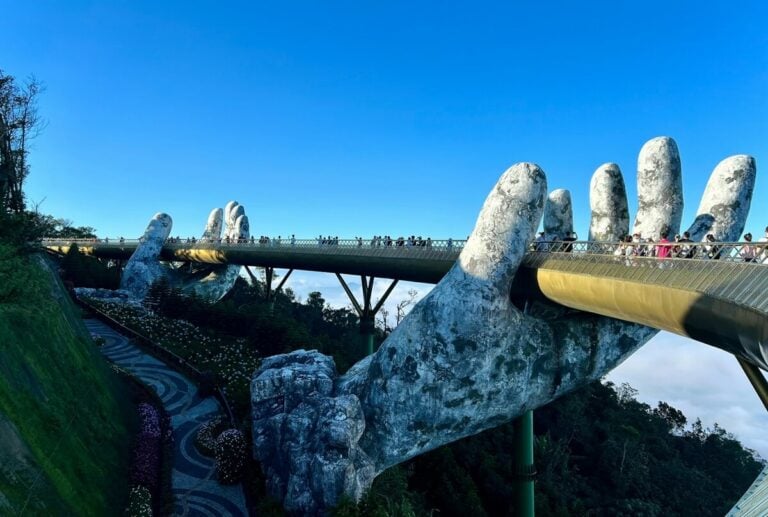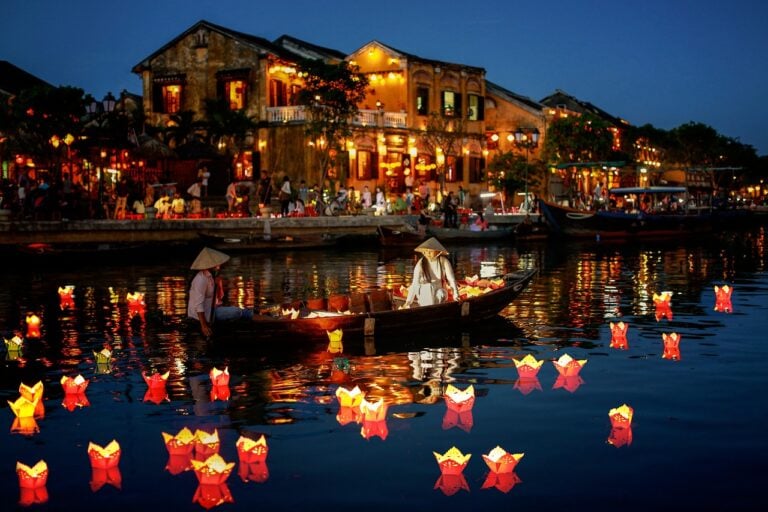Best Things to Do in Manila, Philippines – 2025 Travel Guide
Manila, the vibrant capital of the Philippines, is a city that never seems to sit still. It’s a colorful mix of history, culture, and chaos—in the best possible way. From centuries-old churches and colonial architecture to modern shopping malls and buzzing food streets, Manila offers a little bit of everything for curious travelers.
Whether you’re here for the historical landmarks, the lively nightlife, or simply a taste of authentic Filipino city life, Manila knows how to leave an impression.
History of Manila

Once a key trading port for Chinese, Indian, and Arab merchants, Manila became the crown jewel of Spanish colonization in the Philippines starting in the 16th century. Intramuros, the historic walled city, was at the heart of this colonial hub—filled with stone churches, grand government buildings, and cobbled streets that still echo the past.
In the decades that followed, Manila transformed under American, Japanese, and eventually independent Filipino rule. It wasn’t until the late 20th century that Manila started to show up on the radar of international tourists. Budget travelers were drawn in by the affordability, while others came to explore the city’s rich history and boundless energy.
Best Things to do in Manila
Once a key trading port for Chinese, Indian, and Arab merchants, Manila became the crown jewel of Spanish colonization in the Philippines starting in the 16th century. Intramuros, the historic walled city, was at the heart of this colonial hub—filled with stone churches, grand government buildings, and cobbled streets that still echo the past.
Intramuros
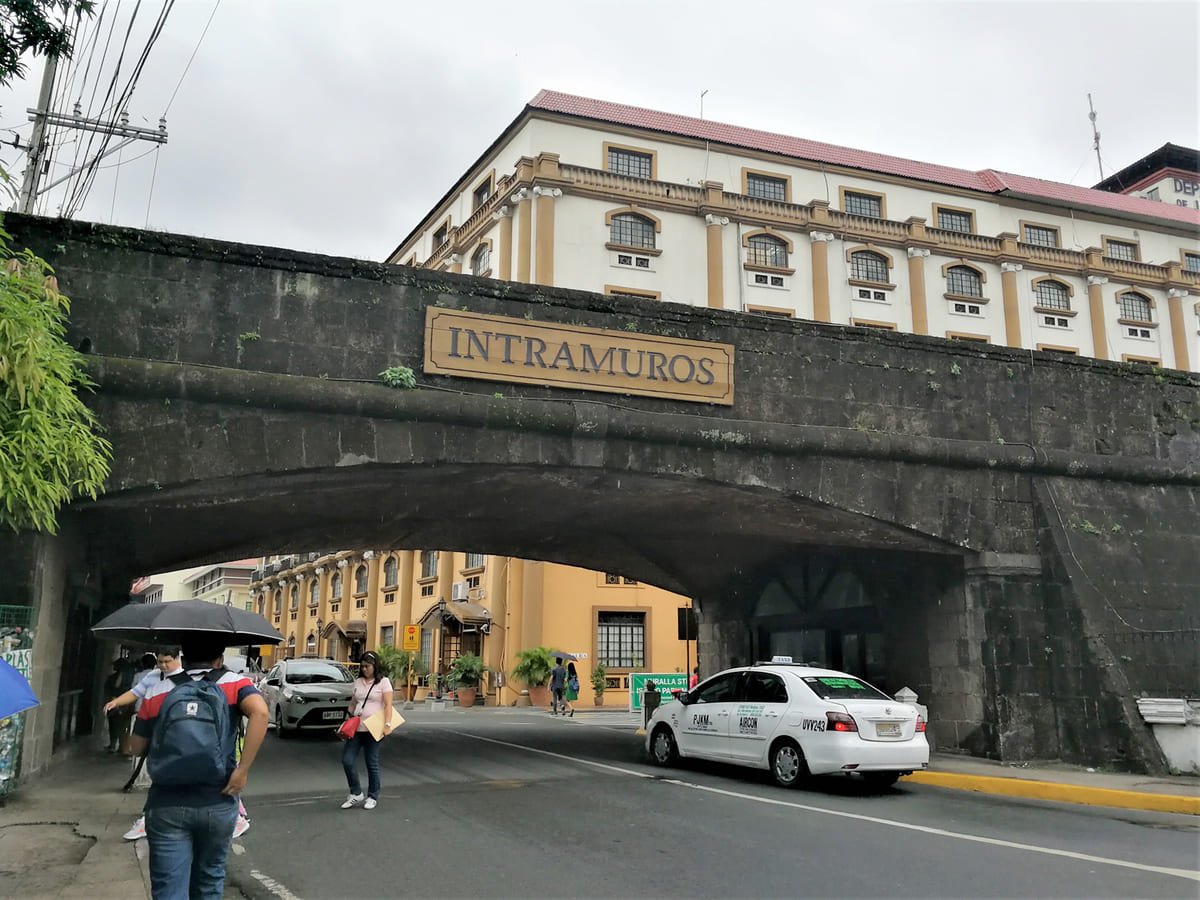
Built in the late 1500s by Spanish colonists, Intramuros feels like stepping into a different time with its cobbled streets and vintage lamp posts. Fort Santiago, a key highlight, was once a military stronghold and a prison, now turned into a museum. The San Agustin Church is also here, the oldest stone church in the Philippines and a UNESCO World Heritage Site.
This entire district has become a kind of open-air museum that blends living heritage with historical ruins. It’s a dream for photographers, history buffs, or anyone curious to see how colonialism shaped Manila. Horse-drawn carriages are still a thing here, though it’s just as lovely to explore on foot.
Rizal Park (Luneta)

Luneta is more than just a green space—it’s sacred ground in Philippine history. This is where national hero José Rizal was executed in 1896, an event that sparked the country’s push for independence. Today, his memory is immortalized in a solemn monument guarded 24/7 by ceremonial sentries.
Today, families picnic on the lawns, couples take long walks, and kids run around the fountains and open spaces. Spanning over 60 hectares, the park includes beautifully landscaped gardens, a mini Japanese zen garden, a relief map of the Philippines, and a musical dancing fountain.
Fort Santiago

Technically part of Intramuros, but deserving of its own spotlight, Fort Santiago was the military nerve center of the Spanish colonial government. Its thick stone walls and imposing gates hide a dark past—it was used as a prison where José Rizal spent his final days before execution.
Today, you can walk through his preserved prison cell and a path of bronze footsteps marking his final walk to the execution site. Beyond the history, Fort Santiago’s grounds are lush and peaceful. You’ll find shaded pathways, gardens, old cannons, and lookout points by the river.
Manila Cathedral
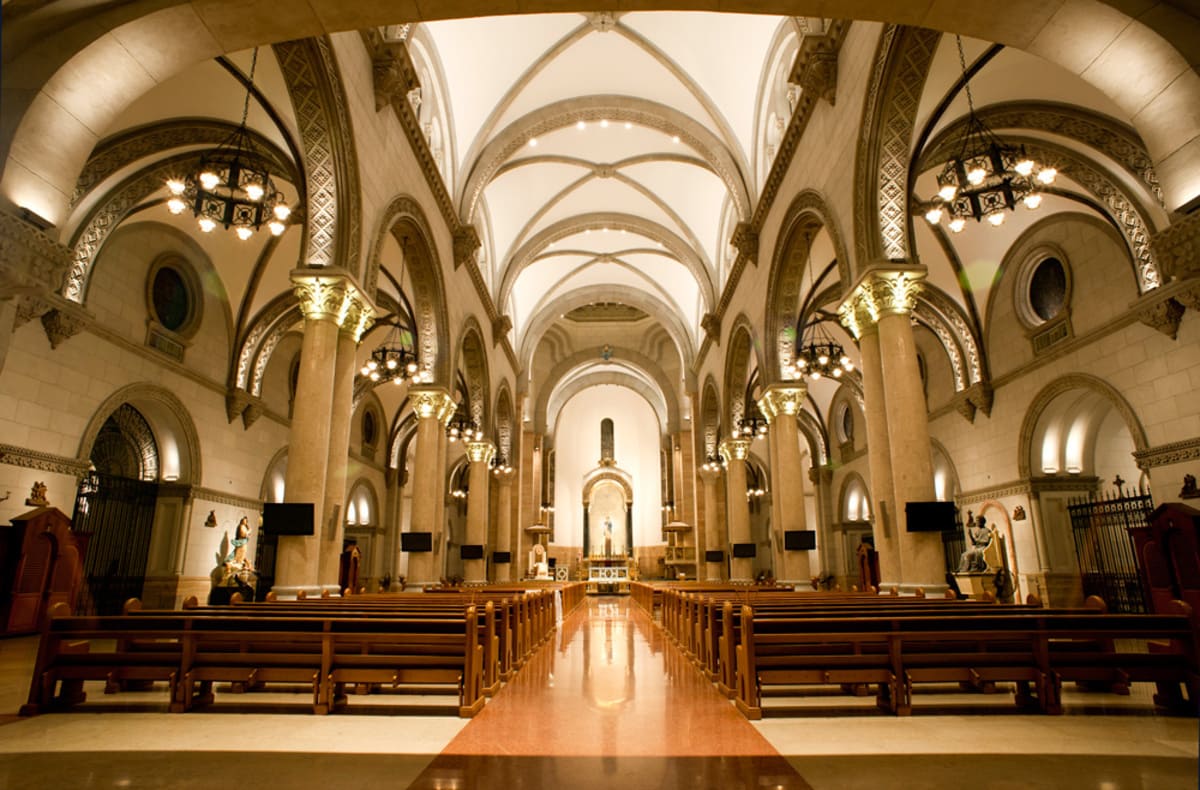
Rising from the heart of Intramuros, Manila Cathedral is a symbol of the city’s resilience. It’s been rebuilt multiple times due to earthquakes and war, with the current structure completed in the 1950s. The architecture leans into Romanesque Revival, with soaring ceilings, stained-glass windows, and an interior that glows with soft light and reverence.
This cathedral isn’t just for religious visitors—it’s a venue for national ceremonies and state funerals, and one of the most beautiful buildings in the city. Step inside for a moment of quiet awe, especially in the early morning when the sunlight filters through the tall arched windows.
San Agustin Church and Museum
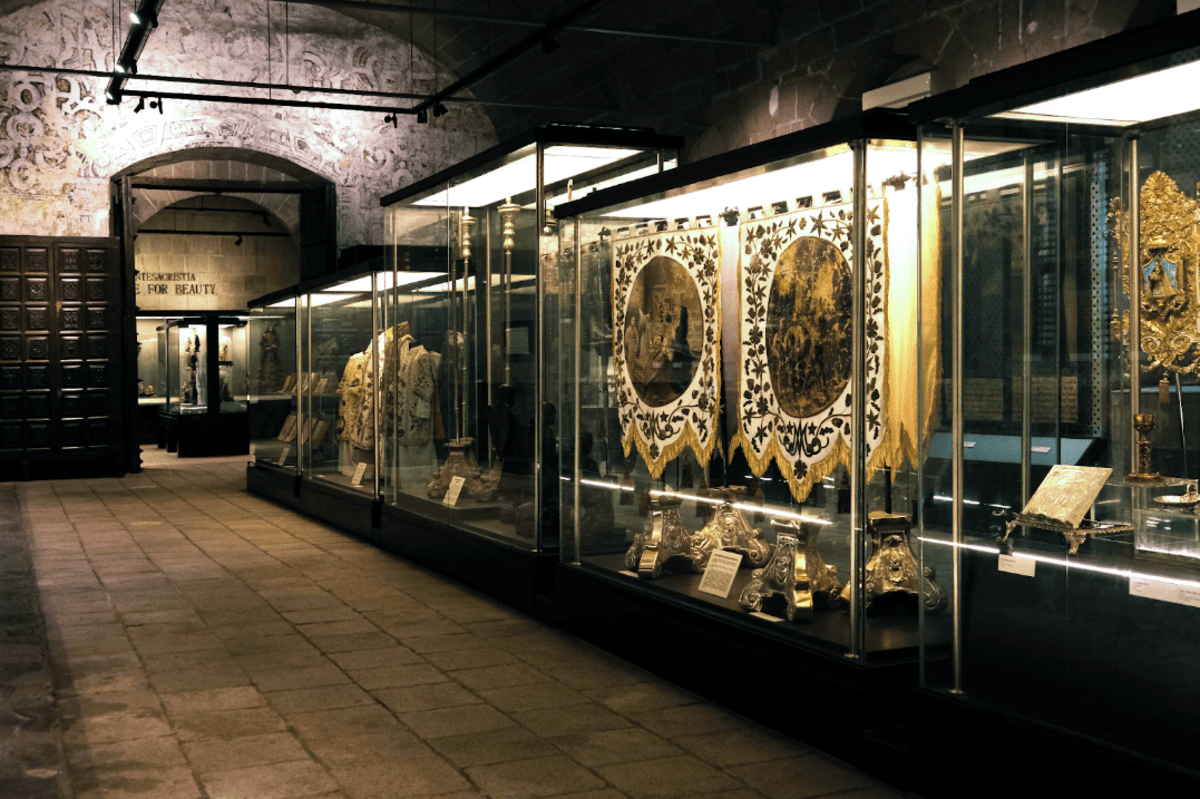
San Agustin Church is one of Manila’s oldest treasures. It’s a UNESCO World Heritage Site, known for its exquisite trompe-l’œil ceiling paintings and the grand baroque altar. The attached monastery-turned-museum houses a fascinating collection of religious art, antique furniture, and centuries-old manuscripts.
What makes this church special is how seamlessly it weaves the sacred with the historical. It feels reverent but not overly solemn—more like you’re stepping into a living time capsule that still breathes with life.
Binondo

Known as the oldest Chinatown in the world, Binondo is a vibrant maze of narrow alleys, ornate temples, and timeworn buildings. Founded in 1594, it’s been a trading hub for centuries and is also home to cultural gems like the Binondo Church and the nearby Plaza San Lorenzo Ruiz.
A walk through Binondo offers a fascinating look at local culture. Look out for Chinese temples nestled between modern shop houses, traditional Chinese medicine stores, and buildings from the American and Spanish eras standing side by side.
Cultural Center of the Philippines (CCP)

The CCP stands as Manila’s crown jewel of art and performance. Built in the 1960s as part of a national push to celebrate Filipino creativity, it’s hosted everything from classical ballet to indie theater and contemporary art exhibitions. The architecture is bold and brutalist, helping it stand out against the city’s skyline.
Whether you’re watching a play, catching an art film, or just exploring the lobby’s rotating exhibits, CCP is where Manila’s creative pulse beats loudest. It’s a great place to experience Filipino artistry beyond what’s seen in museums or on the streets.
Paco Park

A small, circular park that used to be a cemetery, Paco Park is now one of Manila’s most romantic and peaceful green spaces. The thick stone walls, mossy niches, and elegant inner courtyard give it a slightly gothic but very serene atmosphere. José Rizal was first buried here after his execution, making it historically significant as well.
It’s a popular spot for intimate concerts, prenup shoots, and quiet strolls. If you’re looking to slow down and escape the bustle of the city, this tucked-away gem is perfect.
Manila Baywalk

Stretching along Roxas Boulevard, the Baywalk is one of the best places in Manila to catch the sunset. Locals and tourists alike gather here in the late afternoon to enjoy the breeze, street food, and street performers while watching the sky melt into pink and gold over the water.
While the bay itself has faced environmental challenges, recent efforts have revitalized the area with clean-up drives and beautification. The views are still spectacular, and the vibe—especially at sunset—is truly one-of-a-kind.
San Sebastian Basilica

This Gothic-style church is the only all-steel building of its kind in Asia. Shipped piece by piece from Belgium and assembled in Manila in 1891, it’s both a marvel of architecture and engineering. Its towering spires, stained-glass windows, and ribbed vaults give it a distinct European feel—a rare sight in South East Asia.
While it’s not as famous as some other churches in Manila, it draws fewer crowds, giving more room to appreciate its quiet grandeur. If you’re into hidden architectural gems, San Sebastian should definitely go on your bucket list.
Ayala Triangle Gardens
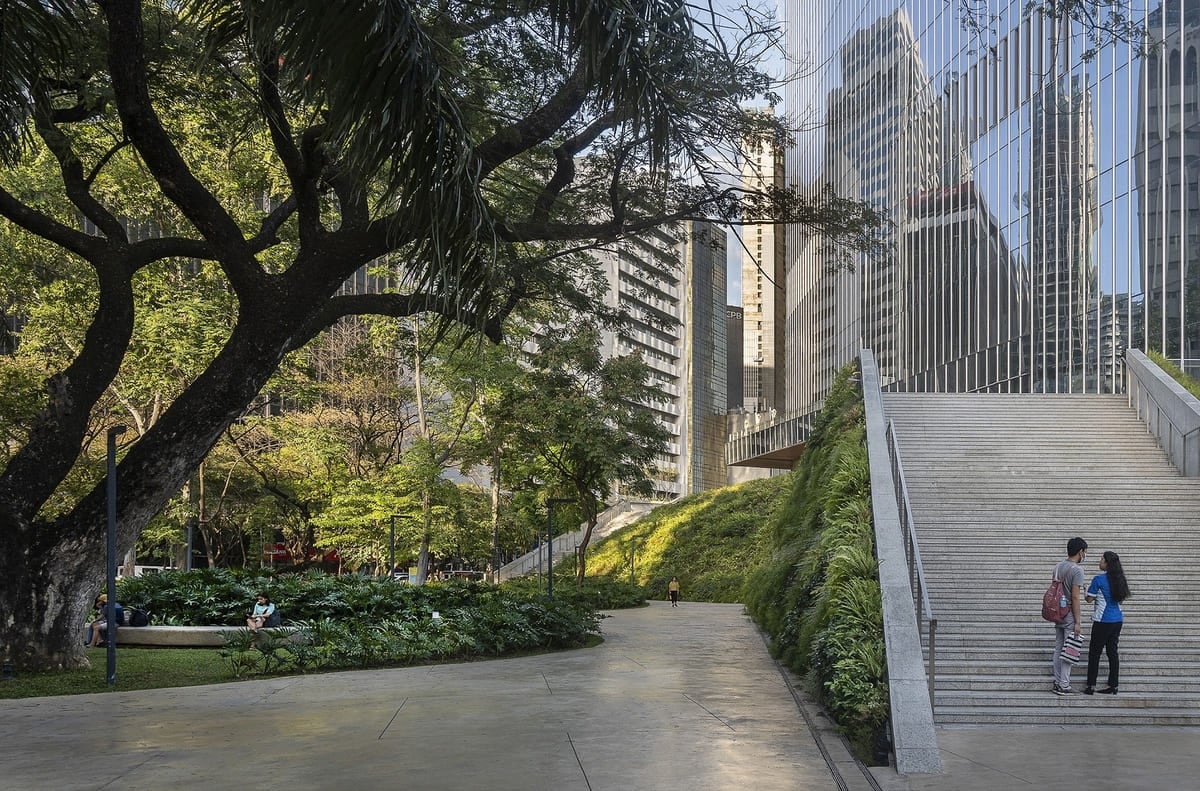
While technically in Makati, Ayala Triangle is close enough to Manila proper and serves as a refreshing green refuge in the middle of the urban jungle. This triangular patch of parkland is surrounded by office buildings, making it a favorite lunch spot for workers and a serene place for travelers to relax.
In the evenings, the park lights up—literally. During the holidays, it becomes one of the most beautiful spots in Metro Manila with its synchronized light and sound shows.
Best Foods and Places to Eat in Manila
Manila is a city where food isn’t just nourishment, it’s part of the cultural identity. From hearty classics to inventive fusions, here’s a delicious guide to Manila’s must-try dishes and where to get them.
Adobo at The Aristocrat

Adobo is the unofficial national dish of the Philippines, and The Aristocrat along Roxas Boulevard has been serving one of the best versions since the 1930s. Their chicken and pork adobo is simmered in vinegar, soy sauce, garlic, and bay leaves until it’s deeply flavorful and fall-off-the-bone tender. The taste is comforting, tangy, and perfectly salty, served with garlic rice and achara (pickled papaya) on the side.
Sinigang na Baboy at Locavore

Sinigang is a sour tamarind-based soup that’s hearty, warming, and deeply Filipino. At Locavore Kitchen & Drinks, they take the classic pork sinigang and elevate it with a house-made broth that’s both sour and savory, served piping hot in a clay pot with fresh vegetables and melt-in-your-mouth pork belly.
Kare-Kare at Café Juanita

Kare-Kare is a rich oxtail stew made with a creamy peanut sauce and served with bagoong (fermented shrimp paste) for contrast. At Café Juanita in Pasig, the kare-kare is slow-cooked and decadently thick, with a medley of tender meat, string beans, banana blossoms, and eggplant.
Lechon Kawali at Manam Comfort Filipino

Manam is known for offering both traditional and “twisted” versions of Filipino dishes, but their classic lechon kawali keeps things straightforward—and excellent. The pork belly is deep-fried to golden perfection, resulting in crispy skin and succulent meat that’s even better when dipped in their tangy liver sauce or spiced vinegar.
Halo-Halo at Milky Way Café

No food list in Manila is complete without halo-halo, the country’s ultimate summer dessert. Milky Way Café, located in Makati, serves one of the most beloved versions. It’s a tall glass packed with shaved ice, sweetened bananas, jackfruit, ube halaya, leche flan, beans, and creamy milk, topped with ube ice cream and pinipig (toasted rice).
Laing at Mesa Filipino Modern
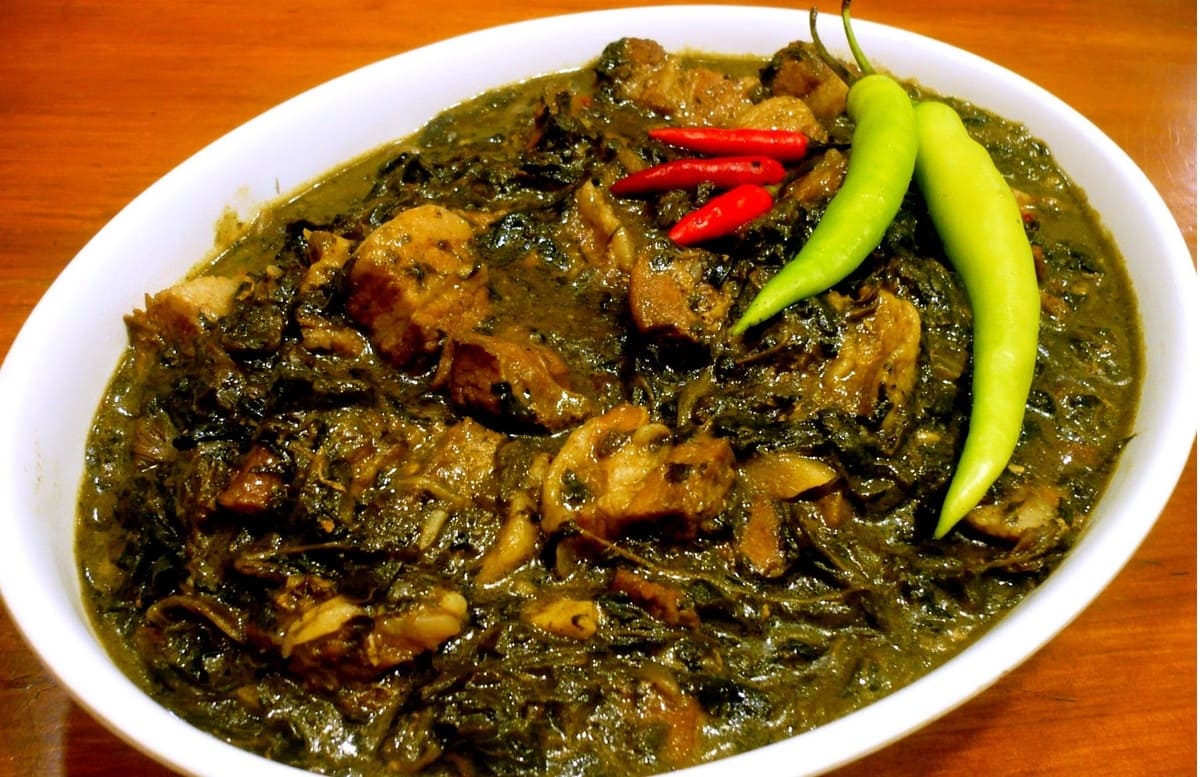
Laing is a spicy, creamy dish made from dried taro leaves cooked in coconut milk and chili. It may sound simple, but it’s a flavor bomb. At Mesa, the laing is rich and velvety, often served with chunks of pork or shrimp, and plated in a modern way that still respects its Bicolano roots.
Pancit Malabon at Dolora’s Hauz of Pancit Malabon

This thick rice noodle dish is native to Malabon, and Dolora’s Hauz (with branches across the metro) serves one of the most authentic versions. Pancit Malabon is known for its bright orange shrimp sauce, topped with seafood, pork, and boiled eggs. The umami from the shrimp paste and the richness of the toppings make this noodle dish unforgettable.
Tapsilog at Tapa King
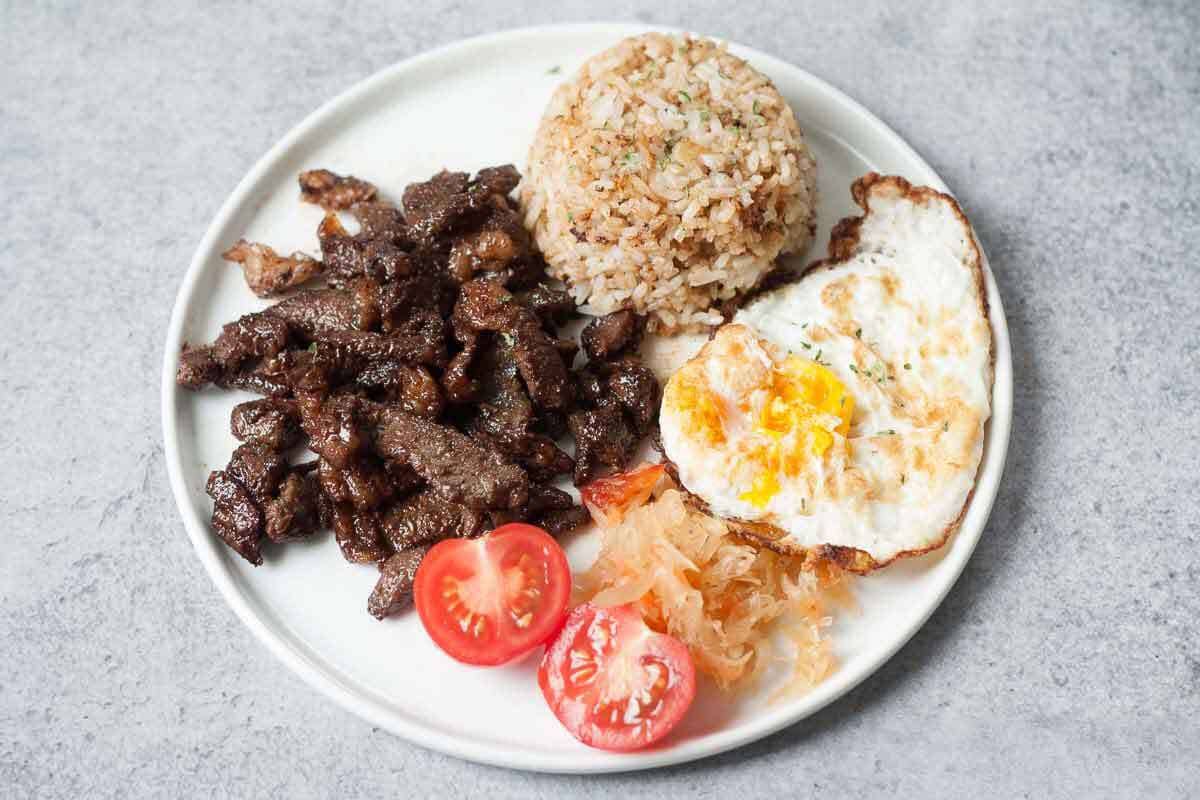
Tapsilog is the ultimate Filipino breakfast: tapa (cured beef), sinangag (garlic fried rice), and itlog (egg). It’s simple, filling, and deeply satisfying. At Tapa King, they keep it classic with tender beef strips, crispy edges, and just the right amount of saltiness to go with the egg and rice.
When Is The Best Time To Visit Manila?

The best time to visit Manila is during the cooler dry season, which runs from December to February. During these months, temperatures are more manageable—averaging between 24°C to 30°— and there’s far less humidity in the air. The skies are mostly clear, making it a pleasant time for sightseeing.
March to May marks the dry summer season, and while the weather is still dry, it gets noticeably hotter, especially in April and May when daytime temperatures can soar above 35°C. It’s a good time for beach day trips outside the city but less ideal for urban exploring unless you’re comfortable with the heat.
How Many Days Do You Need in Manila?
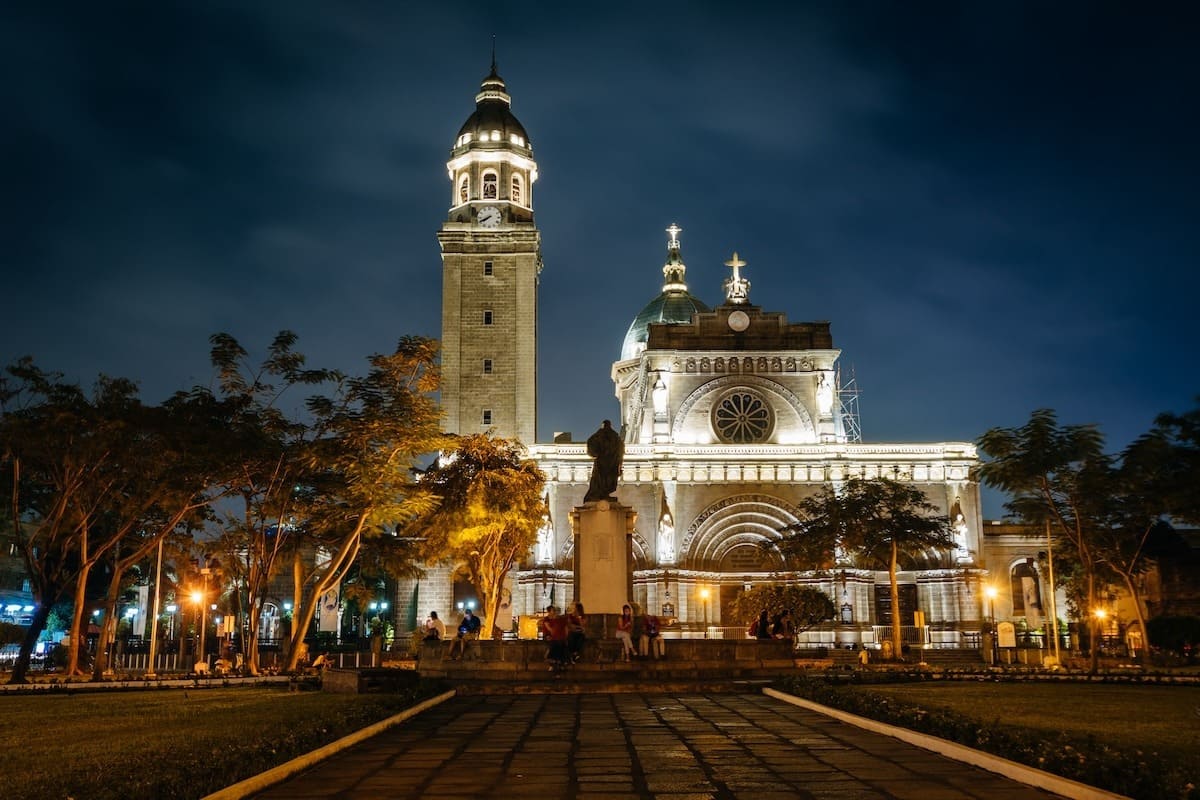
To really get a feel for Manila, 3 to 4 days is a solid amount of time. It gives you enough breathing room to explore the city’s historic, cultural, and modern highlights without feeling rushed—plus a little wiggle room to soak in the local atmosphere.
An extra day lets you go beyond the city—maybe a quick trip to nearby Tagaytay for the cool breeze and volcano views, or a spa day in nearby Quezon City. If you want to travel Manila the chill way, 3 to 4 days strikes a great balance. Don’t spend less than that, as you’ll be speeding through attractions too fast to appreciate them.
Where To Stay In Manila?

Manila offers a wide range of accommodations, whether you’re a backpacker on a tight budget, a digital nomad seeking comfort and convenience, or a luxury traveler. Make sure to check reviews and prices before making a booking!
- The Bayleaf Intramuros – A boutique hotel inside the walled city with rooftop views of Manila Bay and charming cobblestone streets at your doorstep.
- Red Planet Manila Bay – Affordable, clean, and central—great for budget-conscious travelers.
- Makati Diamond Residences – Sleek and luxurious, with apartment-style rooms and full amenities.
- Shangri-La The Fort – A top-tier luxury hotel in the heart of BGC with impeccable service and facilities.
- MySpace Hotel BGC – Affordable yet cozy, with easy access to BGC’s main spots.
- Lub d Makati – One of the best-rated hostels in the city with coworking spaces and social vibes.
How Do You Get Around in Manila?
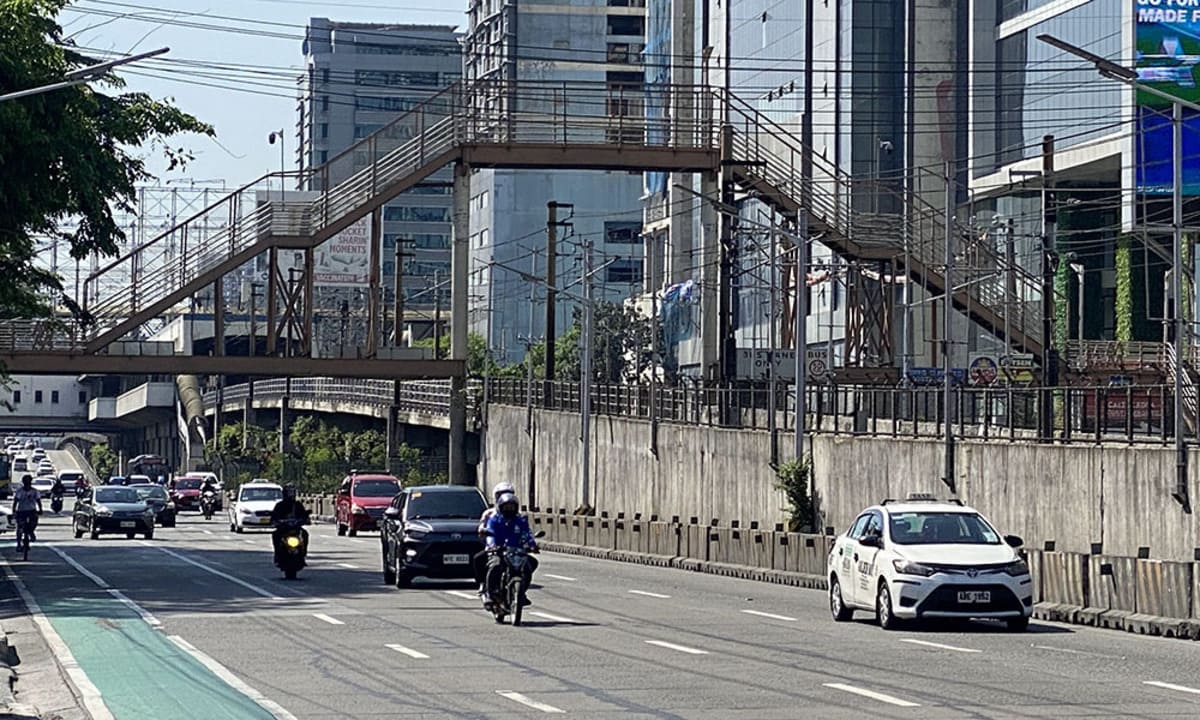
Getting around Manila can be a bit of an adventure. Once you know your options, it becomes a lot easier to navigate the city’s urban sprawl. Jeepneys are the cheapest and most unique way to travel short distances. They follow set routes and cost only a few pesos, but figuring out those routes can be confusing for first-timers.
Manila’s light rail systems—the LRT-1, LRT-2, and MRT-3—are a great way to skip road congestion, especially during rush hour. They connect key areas like Baclaran, Recto, Cubao, and North Avenue. Ride-hailing apps like Grab are also extremely popular in Manila and a safer alternative to hailing cabs.
Renting cars and motorcycles in Manila can be a convenient choice. However, navigation can be tricky, and drivers can be aggressive. There’s also the number coding scheme (UVVRP) in place, which restricts cars based on license plate numbers on certain weekdays. Make sure your rental provider informs you about this to avoid fines.
Conclusion

Manila might be fast-paced and chaotic, but that’s exactly where its charm lies. It’s a city of contrasts—where towering skyscrapers stand beside centuries-old churches, where modern art scenes flourish amid gritty streets, and where every neighborhood offers a different flavor of Filipino culture.
Whether you’re here for the historical depth or the vibrant nightlife, Manila delivers an experience that’s raw, real, and unforgettable. Take your time exploring, don’t rush through the chaos, and you’ll start to see the rhythm of the city unfold.
Please follow my WhatsApp Channel for the latest updates. You can also Contact Me if you need any further assistance.



